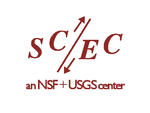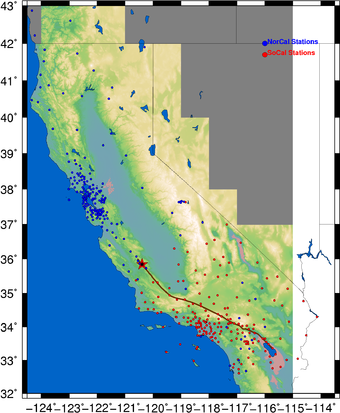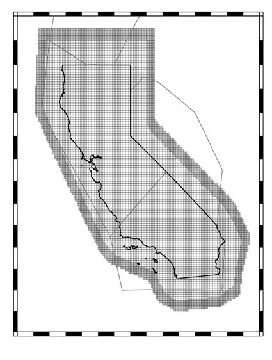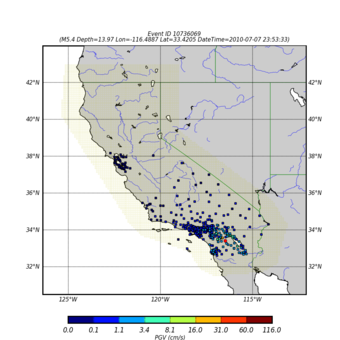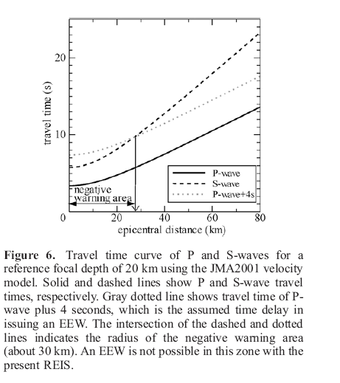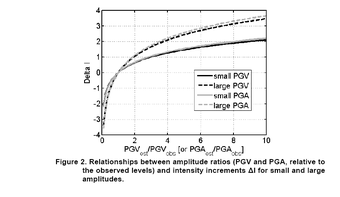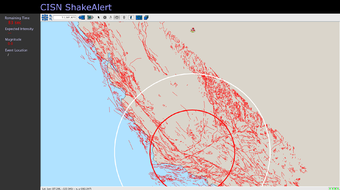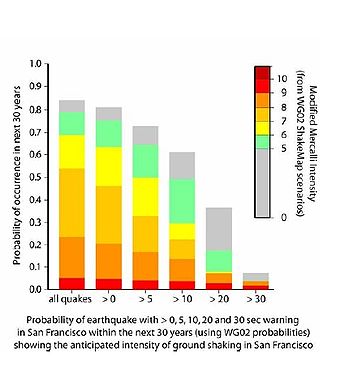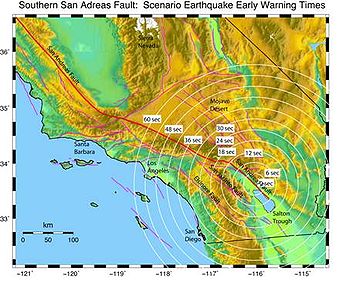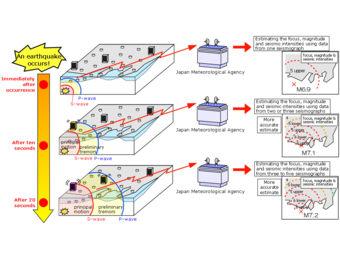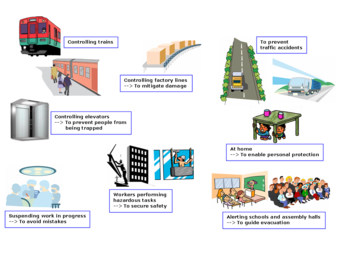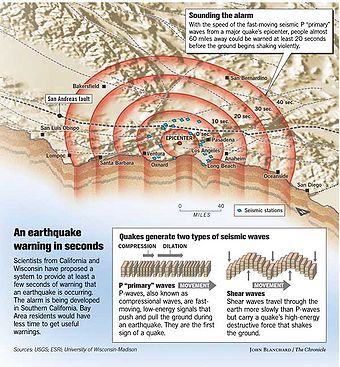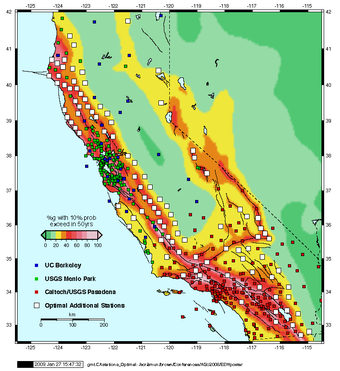Earthquake Early Warning
Contents
- 1 SCEC Earthquake Early Warning Activities
- 2 CISN ShakeAlert Evaluation Processing
- 3 CISN EEW Testing Data Sets
- 4 EEW-Related SCEC Research Documents and Links
- 5 Catalog Comparison
- 6 CTC Abstract for SCEC Annual Meeting 2010
- 7 Additional ShakeAlert Information
- 8 ShakeAlert CTC Software Stack Description
- 9 See Also
SCEC Earthquake Early Warning Activities
SCEC4 science plans emphasize the development and use of time-dependent seismic hazard analysis. SCEC is working to extend time-dependent seismic hazard analysis through application of EEW technologies. SCEC is working with the California Integrated Seismic Network (CISN) in the development and evaluation of a prototype CISN EEW system called the CISN ShakeAlert system.
SCEC is working to developed automated CISN EEW performance evaluation system. This system, currently called the CISN Testing Center (CTC), is based on the testing framework developed on the SCEC CSEP project.
CISN ShakeAlert Evaluation Processing
Current SCEC EEW Evaluation development is described in on the following wiki entry page:
CISN EEW Testing Data Sets
CISN EEW Trigger Summary
- CTC Test Results Directory
- CISN EEW Algorithm Testing Site
- CISN Cumulative Trigger Summary (2008-2010) (15MB Zip File containing 75MB html File)
CISN EEW Station Lists
CISN provided the following list of stations used in current CISN EEW processing
- Northern CISN Station List
- Southern CISN Station List
- Combined CISN EEW Station List (KML Format)
- Southern San Andreas Fault Trace lon/lat (KML format)
The ShakeMap authorized data source may provide the observational data used to validate short term ground motion forecasts.
- ShakeMap Rss System
- ANSS Seismic Data Center
- SCEC Data Center at Caltech
- Northern California Data Center at UC Berkeley
ShakeAlert CTC Trac System
EEW-Related SCEC Research Documents and Links
2010
- CISN EEW Workshop Oct 2010 (7MB ppt File)
- CTC Development Plans April 2010 (12Mb pptx)
- M8_EEW_Analysis
- CISN EEW Testing Document (Updated July 2010)
2009
- CISN EEW Testing Summary 2009
- Fall AGU 2009 (Cua et al)
- Error creating thumbnail: convert: unable to extend cache `/tmp/magick-25379DVKQ8HbcqBJJ': File too large @ error/cache.c/OpenPixelCache/4091. convert: no images defined `/tmp/transform_3182ca07f228.jpg' @ error/convert.c/ConvertImageCommand/3229.Alternative Download Site
- Fall AGU 2009 (Hellweg et al)
- Fall AGU 2009 (Maechling et al)
- SCEC Annual Meeting Poster 2009 (Maechling et al)
- Maren Bose EEW Presentation (2009)
2008
- Fall 2008 AGU EEW Presentation (Hellweg et al)
- CSEP Testing Center Overview (Dec 2008) (Maechling et al) (3MB ppt)
- Prospective Testing Overview (EEW and CSEP) (Maechling et al) (3MB ppt)
- EEW Meeting In Kyoto Poster 2008 (Maechling et al) (PDF)
2006
Catalog Comparison
We looked at current eew results on the CISN algorithm testing site CISN EEW Algorithm Testing Site]. The web system provides several summaries. We compared the earthquakes on two summaries available on the web site which are: (1) Catalog summary and (2) Cumulative Trigger Summary. EEW system list of ANSS events against ANSS list of triggers.
To interpret these trigger summaries were designed to compare eew performance anywhere in california. The ANSS earthquake catalog is the reference observational data.
The EEW algorithm testing system filters the catalog to include only earthquakes within California region. We based the EEW California region on the CSEP region. There are two regions defined. California testing region. In this region, the systems are expected to forecast earthquakes, or provide EEW alerts. There is a slightly larger region which is the catalog region. When we retrieve the catalog and we restrict our request to a region, we may miss earthquakes right on the edge due to uncertainties in the earthquake locations. So we use a reference earthquake data set from a slightly larger region, the catalog region.
These cumulative summaries work on the site, but they are so large now, with multple years of info that it produces multi-MB htlm files. We don't have good parsing of these, but we worked with data from these two summaries retrieved on 12 Oct 2010.
We found that he catalog list has two events not included in the trigger list. I believe these in the region between the testing region and the catalog region. The two catalog events are listed:
NC 71330090 1/4/2010 14:24:54 4.12 40.2773 -123.868 30.74 CI 14858988 10/12/2010 3:00:34 4.27 32.1582 -115.29 5.58
We need to confirm this one is plausible (32.1582,-115.29) but this is in Humbolt (40.2773,-123.868)so it is not out of the teting region. This discrpency between ANSS events in the two lists remains.
The total events in the trigger list is 146 (1Jan2010 through 12Oct2010)
CTC Abstract for SCEC Annual Meeting 2010
Testing Regional-scale Ground Motion Estimates for the CISN ShakeAlert Project Philip Maechling, Maria Liukis, Thomas H. Jordan
Our SCEC research team has developed initial capabilities of the CISN Testing Center (CTC) as a part of the USGS-funded CISN ShakeAlert Project. The CTC is designed to compare regional-scale ground motion estimates, such as peak ground motion estimates, against observed ground motion data, for significant California Earthquakes. The CTC is designed to identify which ShakeAlert ground motion estimation methods produce the best fit to observed ground motions.
Scientific goals of the CTC include (a) development of consensus among SCEC researchers on meaningful measures of comparison between ground motion estimates and observations, (b) collection and analysis of ShakeAlert performance information, and (c) integration of standard Probabilistic Seismic Hazard Analysis (PSHA) terms and practices into EEW. The technical goal of the CTC is to develop an automated system that can comparing ground motion estimates against ground motion observations. The CTC system used the CSEP testing framework to automate the evaluation of CISN ShakeAlert rapid earthquake parameters including ground motion forecasts for each event.
As part of this year’s CTC development, we updated the CSEP Testing Framework to use the USGS ShakeMap RSS Feed as an authorized source of event-based ground motion observations. As ShakeAlert systems produces rapid ground motion estimates for significant California events, the CTC will evaluate those ShakeAlert ground motion estimates against CISN ground motion observation using goodness-of-fit algorithms defined by CISN scientific groups.
Our ShakeAlert ground motion forecast testing shares scientific and technical goals with several other SCEC activities including validation of attenuation relationships, synthetic ShakeMaps, velocity model and wave propagation model goodness of fit measures, and short term ground motion forecast testing. The CTC system is designed to support CISN ShakeAlert testing and to also be applicable for evaluation of other ground motion estimation methods.
Additional ShakeAlert Information
- CISN Home Page
- USGS ShakeAlert Press Release
- Caltech Seismo Lab
- U.C. Berkeley Seismo Lab
- USGS Pasadena Seismic Network Operations
- USGS Menlo Park Seismic Network Operations
ShakeAlert CTC Software Stack Description
The following packages contribute to the software stack used by EEW software:
- awk
- sed
- java
- python and it's external libraries: matplotlib, basemap, numpy, scipy, xml
